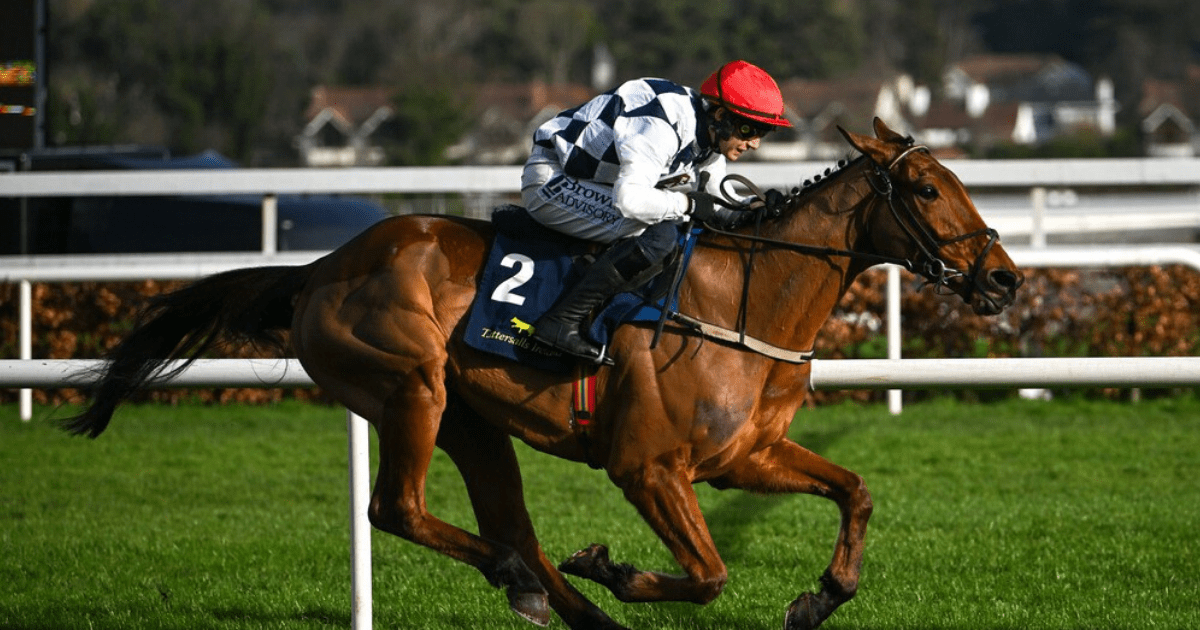Market Madness
There's been a frenzy in the Cheltenham Festival markets as punters can't seem to decide where Willie Mullins' Ballyburn will run. Originally favored for one race, the talented six-year-old has been causing quite the stir.
Stable Whispers
Stable whispers have caused a shift in the odds, with Ballyburn being backed heavily for one race and then another. Punters are left scratching their heads as the uncertainty continues to play out.
Mullins' Mind Games
Willie Mullins' strategic moves with his top horses always keep punters on their toes. The constant chopping and changing in Ballyburn's race plans have left many feeling perplexed and unsure where to place their bets.
Punters React
Online reactions reflect the chaos in the markets, with one punter joking about others 'losing their heads' over Ballyburn's race decision. The unpredictability of the situation has left many feeling the markets are in disarray.
Gamble Responsibly
As the excitement builds for the Cheltenham Festival, it's essential to remember to gamble responsibly and not get caught up in the whirlwind of market madness.
Frequently Asked Questions
How important is a horse’s pedigree when it comes to winning races?
Although pedigree may be a sign of potential, it does not determine a racehorse’s success. The lineage of a horse may indicate an inherited ability for speed or endurance. However, training, health and temperament can also be influential factors. Good training can help a horse maximize its natural abilities. It may even be able to outperform other horses with better pedigrees.
There are different race training methods available for different horse types.
It is true that race training can differ for different horse races, due to the differences in breed characteristics and distances. Thoroughbreds which are associated with long distance flat racing undergo different training to Quarter Horses which specialize in sprinting over short distances. Each breed has unique physical and behavioral traits that require a tailored training approach.
What health precautions must be taken when training racehorses?
To prevent injury or illness, racehorses need to be given the attention they deserve. Regular veterinary checks, vaccinations and dental care are important. It’s also crucial to watch for signs such as fatigue, strain or discomfort. It is important to implement a carefully planned training regime that allows a gradual progression in intensity. This will minimize the risk for musculoskeletal problems.
When can a horse be expected to start racing training?
Horses can start their basic training as yearlings, but most begin their more rigorous race training and conditioning when they are around two years old. When their bodies are mature and able to handle the stress of the track, but still young enough to learn. The exact timing can vary depending on each horse’s temperament and development.
Is it essential for a horse to wear a particular type of shoe when racing?
Racing plates are typically lighter and thinner compared to regular horseshoes. These plates provide the necessary traction on the racetrack while minimizing weight. A farrier skilled in working with racehorses will carefully select and fit these shoes to match each horse’s hoof conformation and the specific racing surface they will be running on.
Can you train a racing horse on any type of track?
While the initial training may be conducted on different tracks, the specific race training will often require facilities that replicate the conditions in which the horse will compete. This includes regulation-sized tracks with the same type of surface the horse will race on. This helps to condition horses and allows them to become familiar with that specific racing environment.
Statistics
- Around 80% of thoroughbred racehorses begin their racing careers by the age of two, according to industry estimates.
- Studies suggest that proper early training can reduce the risk of musculoskeletal injuries in racehorses by up to 50%.
- Gastrointestinal issues affect up to 90% of racehorses during their training, emphasizing the need for careful dietary management.
- The Injury Database from The Jockey Club reports that synthetic racing surfaces have a lower horse fatality rate than dirt tracks, with a statistically significant difference of 1.2 fatalities per thousand starts on synthetics compared to 2.0 on dirt tracks.
- The majority of racehorses in training are subject to an exercise regimen that includes being ridden six days a week.
- An extensive survey indicated that over 90% of racehorse trainers utilize swimming as a low-impact exercise in their conditioning routines.
External Links
racingpost.com
thoroughbred-racing.net
theridinginstructor.net
paulickreport.com
horseracing.com
britishhorseracing.com
How To
How to Mentally Stimulate a Racing Horse While Training
Provide a variety in environments and workouts for a racehorse to avoid boredom or stress. Use outdoor exercises, trail rides, and track work in addition to the track. Teaching new commands or patterns can also engage the horse’s mind. Allowing social interactions with other horses and establishing a bond with handlers contributes positively to the horse’s mental state. A mentally happy horse is more focused and cooperative in training and during races.

